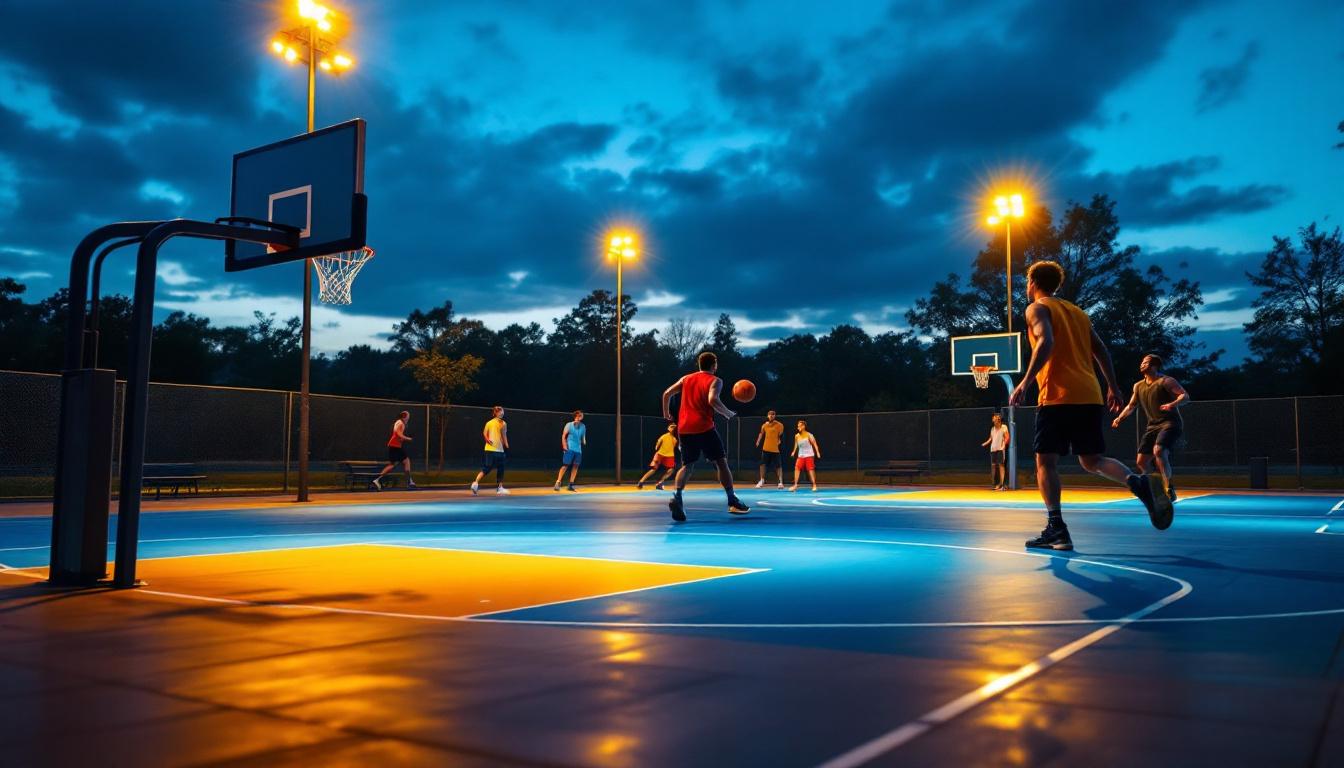
In the ever-evolving landscape of lighting technology, contractors face the challenge of keeping projects relevant and efficient. The Type A light bulb, commonly used in residential and commercial settings, has become a staple in many lighting designs. However, as technology advances, understanding how to future-proof lighting projects is essential for contractors aiming to deliver long-lasting and adaptable solutions.
Type A light bulbs are characterized by their traditional pear shape and are typically found in standard fixtures. They come in various wattages and are available in incandescent, CFL, and LED options. This versatility makes them suitable for a range of applications, from home lighting to office environments.
While the classic incandescent Type A bulb has been a go-to choice for many years, the market has seen significant growth in energy-efficient alternatives. Compact fluorescent lamps (CFLs) and light-emitting diodes (LEDs) have gained popularity due to their lower energy consumption and longer lifespan.
LED Type A bulbs, in particular, have emerged as a frontrunner in energy efficiency, offering up to 80% savings compared to traditional incandescent bulbs. This shift not only benefits the environment but also provides cost savings for consumers in the long run. Additionally, LED bulbs are available in a variety of color temperatures, allowing users to select the perfect ambiance for their space—whether it’s a warm, cozy glow for a living room or a bright, daylight-like illumination for a workspace.
Type A bulbs are incredibly versatile and can be used in various settings, including homes, offices, and retail spaces. Their ability to fit into standard fixtures makes them an easy choice for contractors looking to upgrade existing lighting systems.
In residential applications, Type A bulbs can enhance ambiance and functionality in living rooms, kitchens, and bedrooms. They can be used in table lamps, ceiling fixtures, and even outdoor lighting to create inviting spaces. In commercial settings, they can provide adequate illumination for workspaces while contributing to energy efficiency goals. Moreover, many businesses are now incorporating smart lighting solutions that utilize Type A LED bulbs, allowing for programmable settings and remote control, which can further optimize energy use and enhance security.
Furthermore, the design of Type A bulbs has evolved to meet aesthetic demands as well. Decorative options, such as vintage-style LED Type A bulbs, combine the classic look of traditional incandescent bulbs with modern technology, making them a popular choice for restaurants and cafes aiming to create a nostalgic atmosphere. This blend of form and function ensures that Type A bulbs remain a staple in both residential and commercial lighting solutions.
Future-proofing is the process of designing lighting projects that can adapt to changing technologies and consumer preferences. As a contractor, understanding the principles of future-proofing can help ensure that your projects remain relevant and efficient over time.
One of the most significant steps in future-proofing lighting projects is selecting energy-efficient lighting options. As regulations around energy consumption become stricter, using LED Type A bulbs can help meet compliance while appealing to environmentally conscious consumers.
Additionally, energy-efficient lighting can significantly reduce operational costs for clients. By choosing bulbs with a longer lifespan and lower energy consumption, contractors can provide clients with solutions that save money and reduce maintenance needs over time. Furthermore, the shift towards energy-efficient lighting can also enhance the overall aesthetic of a space, as modern LED designs offer a variety of color temperatures and brightness levels that can be tailored to different environments, from cozy homes to bustling offices.
Smart lighting technology is rapidly gaining traction in both residential and commercial markets. Integrating smart features into lighting projects can enhance user experience and offer greater control over energy use. Options such as dimmers, timers, and app-controlled systems allow users to customize their lighting according to their needs.
Contractors should consider incorporating smart technology into Type A lighting projects. This not only future-proofs the installation but also positions the contractor as a forward-thinking professional capable of meeting modern demands. Moreover, the integration of smart technology can lead to improved energy management, allowing users to monitor their consumption patterns and adjust settings remotely. This capability not only promotes energy savings but also aligns with the growing trend of home automation, making properties more attractive to tech-savvy buyers and renters alike. As the Internet of Things (IoT) continues to evolve, the potential for interconnected lighting systems will only expand, opening up new avenues for innovation and efficiency in lighting design.
When planning a lighting project, design considerations play a crucial role in the effectiveness of the final outcome. From fixture selection to placement, every detail can impact the overall performance and aesthetic appeal of the lighting system.
The choice of fixtures is vital when working with Type A bulbs. Selecting fixtures that complement the bulb’s design and output can enhance the overall look and feel of a space. For instance, using decorative fixtures can elevate the ambiance in residential settings, while sleek, modern designs may be more suitable for commercial environments.
Additionally, ensuring that fixtures are compatible with LED technology is essential for maximizing energy efficiency and longevity. As LED bulbs continue to dominate the market, contractors should prioritize fixtures that support this technology. It’s also worth considering the dimming capabilities of fixtures, as this can add versatility to the lighting design. Dimmable fixtures allow users to adjust the brightness according to different activities or moods, making them an excellent choice for multipurpose spaces.
Proper placement and spacing of Type A bulbs are crucial for achieving optimal illumination. Contractors should consider the specific needs of each space when determining the layout of lighting fixtures. For instance, task lighting in work areas may require closer spacing, while ambient lighting in larger rooms can be spaced further apart.
Moreover, understanding the color temperature of the bulbs can influence the overall atmosphere of a space. Warmer tones can create a cozy environment, while cooler tones may be more suitable for workspaces requiring focus and concentration. Additionally, the height at which fixtures are mounted can greatly affect the distribution of light. Mounting fixtures higher can create a more diffused light effect, while lower placements can produce targeted illumination, which is particularly beneficial for highlighting artwork or architectural features.
Furthermore, it is essential to consider the impact of natural light in the design process. The interplay between artificial and natural light can significantly enhance the overall lighting scheme. For example, in spaces with ample windows, strategically placed Type A fixtures can complement daylight, reducing the need for artificial lighting during the day. This not only conserves energy but also creates a more dynamic and inviting atmosphere. By taking into account the time of day and seasonal changes, designers can create a lighting plan that adapts to the environment, ensuring that spaces remain functional and aesthetically pleasing throughout the year.
As the lighting industry evolves, so too do regulations surrounding energy efficiency and safety. Contractors must stay informed about current standards to ensure compliance in their projects. This not only protects clients but also enhances the contractor’s reputation as a knowledgeable professional.
Energy efficiency standards are continually updated to encourage the use of more sustainable lighting options. Contractors should familiarize themselves with local and national regulations that govern the use of Type A bulbs, particularly regarding wattage limits and efficiency ratings.
By adhering to these standards, contractors can help clients avoid potential fines and ensure that their lighting projects are compliant with current laws. This proactive approach can also position contractors as trusted advisors in the industry.
Safety is paramount in any lighting installation. Contractors must ensure that all fixtures, wiring, and bulbs meet safety standards to prevent hazards such as electrical fires or malfunctions. This includes using products that are certified by recognized safety organizations.
Additionally, educating clients on the importance of proper maintenance and care for their lighting systems can further enhance safety. Providing guidelines on bulb replacement and fixture upkeep can help clients maintain a safe and efficient lighting environment.
Client education is a critical component of successful lighting projects. By informing clients about the benefits of Type A bulbs and energy-efficient lighting solutions, contractors can foster trust and encourage informed decision-making.
Engaging clients in discussions about lighting options is essential for ensuring their needs and preferences are met. Contractors should take the time to explain the differences between incandescent, CFL, and LED Type A bulbs, highlighting the advantages of energy-efficient solutions.
By providing clients with clear information about the long-term benefits of these options, contractors can help them make choices that align with their values and budget. This collaborative approach can lead to greater satisfaction and loyalty from clients.
After a lighting project is completed, ongoing maintenance is crucial for preserving the system’s efficiency and safety. Contractors should offer clients maintenance tips to ensure their Type A lighting remains in optimal condition.
Simple guidelines, such as regular cleaning of fixtures and timely bulb replacements, can extend the lifespan of the lighting system. Additionally, contractors can schedule follow-up visits to assess the performance of the lighting and make any necessary adjustments.
Future-proofing lighting projects, especially those utilizing Type A light bulbs, requires a combination of energy efficiency, smart technology integration, and thoughtful design considerations. By staying informed about regulations and engaging clients in the decision-making process, contractors can create lighting solutions that are not only effective but also sustainable and adaptable to future advancements.
As the lighting industry continues to evolve, embracing these principles will position contractors as leaders in their field, capable of delivering innovative and reliable lighting solutions that meet the demands of modern consumers.
Ready to elevate your lighting projects with the most energy-efficient and future-proof solutions? Look no further than LumenWholesale. We provide contractors with an exceptional range of spec-grade lighting products at unbeatable wholesale prices. Say goodbye to unnecessary markups and hello to premium quality and affordability. With our commitment to industry standards and hassle-free bulk buying, you can ensure every project shines with reliability and performance. Plus, enjoy the convenience of free shipping on all orders. Don’t miss out on the best value in lighting—Wholesale Lighting at the Best Value is just a click away.

Discover essential insights and expert tips for lighting contractors in “Lamp Post: Lighting Contractors Should Know.” This article delves into the latest trends, technologies, and best practices in the industry, ensuring your projects shine brightly and efficiently.

Illuminate your outdoor basketball courts like a pro with expert advice tailored for lighting contractors.

Explore the essential guide to dryer plugs tailored for lighting contractors.

Discover essential insights into light fixtures that every lighting contractor should know.